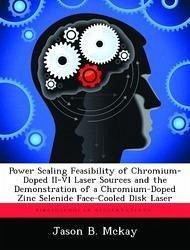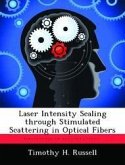Tunable laser sources in the 2-4 ??m spectral range are required for several Air Force sensor applications, yet choices are few in that spectral region, and no truly satisfactory source has yet been found for all applications. Additional source alternatives are needed in addition to the existing rare-earth lasers and non-linear optical sources. Chromiumdoped II-VI (Cr2+:II-VI) materials, a new and relatively undeveloped class of laser material, have the promise of tuning over most of the 2-4 ??m region, but are susceptible to thermal effects and have other issues that make demonstration of sources with sufficient output power difficult. The output power of the Cr2+:II-VI laser needs to be scaled up to meet military application requirements. This dissertation investigates the feasibility of using Cr2+:II-VI laser materials to produce a laser with enough output power to be useful in military sensor applications. This dissertation surveys Cr2+:II-VI material properties and potential laser designs to assess power scaling feasibility, verifies feasibility with a laser demonstration, and then characterizes the thermal effects in the working laser material to help evaluate its effectiveness. The results of the survey show that the Cr2+:II-VI laser materials (such as Cr2+:ZnSe, Cr2+:CdSe, and Cr2+:CdMnTe) are especially susceptible to overheating and thermally-induced optical distortion, but otherwise are quite satisfactory laser materials. Cr2+:ZnSe is the most promising, due to its high thermal conductivity and relatively high maximum Cr2+ doping concentration. A face-cooled disk laser design using Cr2+:ZnSe looks most feasible for efficient power scaling at the power levels useful for sensor applications, as it produces high efficiency but low thermal distortion without requiring inordinate amounts of input power.
Hinweis: Dieser Artikel kann nur an eine deutsche Lieferadresse ausgeliefert werden.
Hinweis: Dieser Artikel kann nur an eine deutsche Lieferadresse ausgeliefert werden.








